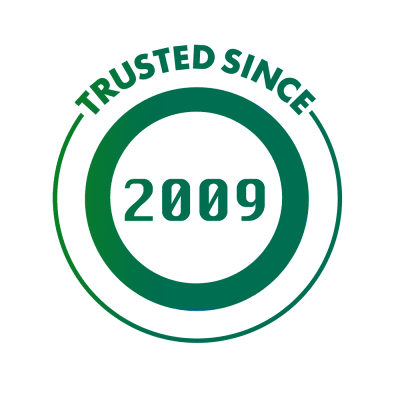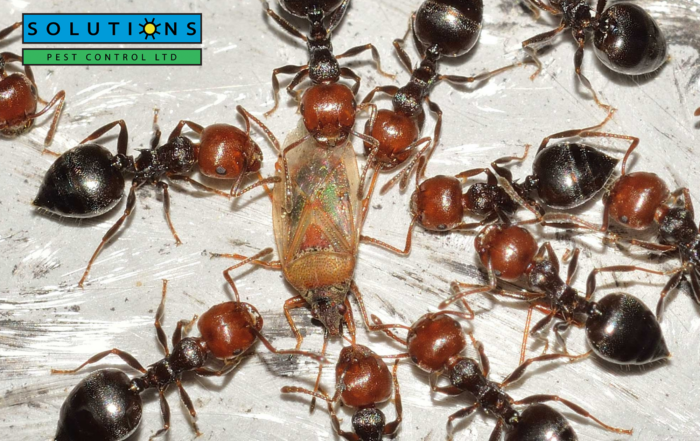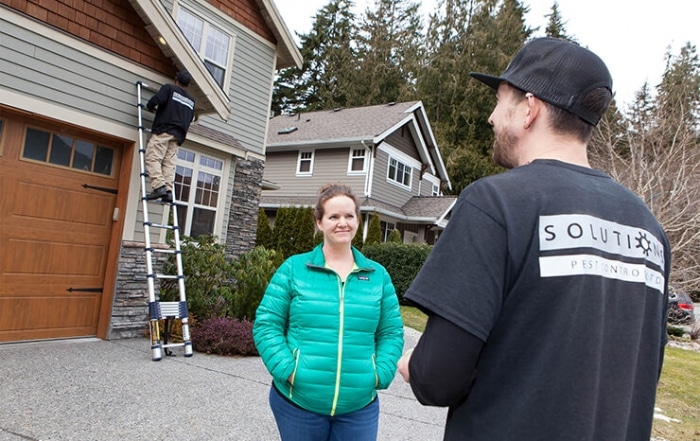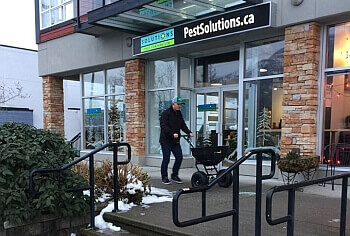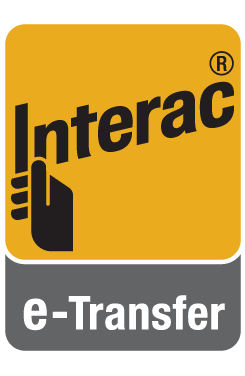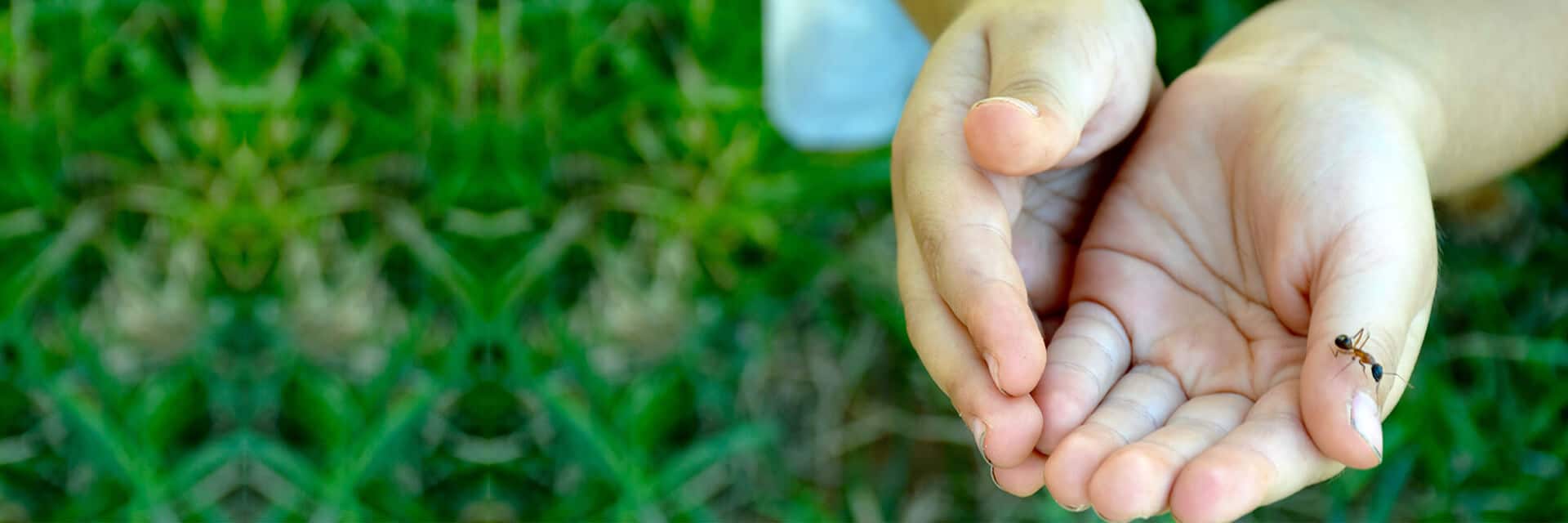
Ant Control Services
Local Ant Problems
There are over 20,000 species of ants on the planet. Wow – good thing there is only some 100 or so species in British Columbia. Better yet, there are only a few types of ants that cause problems in homes, restaurants and offices in Metro Vancouver.
Ants primarily reside outdoors and serve as valuable scavengers that aid in maintaining the tidiness of gardens and landscaping. However, some ants can create problems when the otherwise harmless insects invade homes to forage for food.
The likelihood of a home invasion is high in the well-developed Metro Vancouver region, as these ants often prefer to live in a moist, protected spaces with abundant food sources.
Ants live in colonies. Their social structure is highly organized and efficient, with the sole objective of growing their colony. Given a suitable habitat near a food source, say your home or kitchen area, a colony will continue to grow. There is no reason for them to leave unless you make a change.
- PRO TIP:
- If you are dealing with an established ant colony you should seek out a professional; call Solutions Pest Control.
Should you be concerned?
Most ants commonly found in BC are not aggressive, although some can bite. Ants should be tolerated as much as possible since they cause little damage to the garden. They can even be considered beneficial because they eat other insects like young silverfish and moths.
Certain kinds of ants commonly build nests in or near homes. They become pests when you see unsightly trails of workers throughout your home taking advantage of the various food and moisture sources available. Homeowners with infestations can even report flying ants during mating season. More on the problems caused by ants in the home.
Ant Species That Cause Problems
Species known to invade homes in BC include the:
- carpenter ant,
- little black ant,
- odorous house ant,
- thief ant, and
- pharaoh ant.
Pavement ants can become a nuisance in lawns, gardens, and pathways, as well as indoors.
Problems With Ants In The Home
Our local household ants create problems by nesting in residential areas, invading homes in search of food, and even causing structural damage to buildings.
- Household ants often travel in large groups to collect food from previously identified sources.
- Gathering food en masse can contaminate indoor areas where people eat or prepare meals.
- When collecting food from an indoor source like a kitchen or pantry, the foraging insects may transfer dirt and other unsanitary materials to countertops, shelves, and edible items.
- Carpenter Ants do not eat wood; rather, they chew up wood to make nests for their colony.
- Pharaoh ants can spread several harmful pathogens, including Salmonella spp., Staphylococcus spp., and Streptococcus spp, producing severe health concerns to you and your family
Identify Your Pest Ants
Although the different types of ants in Metro Vancouver share many of the same general traits regarding overall appearance and behaviour, each species retains unique characteristics affecting the identification and management of the pest insects.
Knowing which species has laid claim to your home is crucial to removing them. Don’t wait; the issue will not go away unless you take action.
Call Solutions Pest Control
Solutions Pest Control is familiar with all the types of ants that live in your neighbourhood, and the problems ants can bring to your home or business. Give us a call today if you notice too many ants in your house. Schedule a Service Call Now!
Ant Infestation
Signs of Infestation
Typical household ants often send individual workers (scouts) from the colony to inspect surrounding areas and locate food sources.
While the presence of a lone ant indoors does not necessarily indicate a nest inside as well, it does signal the existence of a colony in the nearby vicinity.
It also indicates a high probability of hundreds or thousands of ants returning once the scout ant notifies the colony of the food source.
The sight of swarmers, either dead or alive, serves as another sign of a nearby ant infestation. A well-established colony will produce a mating swarm once a year to establish a new nest and grow a new colony.
What Do Ants Eat? – Their Diet
The local household ants are strongly attracted to these types of foods:
- sugar and sugary foods like honey, soft drinks, and ice cream;
- honeydew secretions produced by aphids on infested houseplants;
- greasy foods (like peanut butter or crumbs);
- protein by feeding on meats and dead insects; and
- spilled greases and oils.
Where Do Ants Come From? – Ant Reproduction
Ants live in colonies. Their social structure is highly organized and efficient, with the sole objective of growing their colony. You can better understand your ant pest issue by understanding ant behaviour.
Ant Control Treatments
How can I get rid of ants?
Ant Control Strategies
The following is a list of strategies we use to assess what should be done to deal with a specific client issue. Other than the Preventative strategies, described below, not every Ant Pest issue should be treated the same.
Prevention strategies, listed below, can be applied in every household.
- PRO TIP:
- Dealing with an established ant colony is tricky. If you do not locate the main nest and eliminate the queen, you could cause the colony to split into two “Budding” and possibly double your problem.
If you are dealing with an established colony, you should call Solutions Pest Control to eliminate your ant pest problem.
Ant Control Products
If you are a DYI person, you may want to check out the Ant Control products available in our online store.
Home Owners May Require Residential Applicator Certificate
If you are a homeowner and are planning to use pesticides on your property in British Columbia, you may require a Residential Applicator Certificate under the Environmental Protection & Sustainability Ministry. FYI.
Solutions To Your Pest Control Issues
Dealing with ant infestations can be a trying experience. That’s why when you have problems, you need Solutions. Protect your home and your loved ones with professional ant control solutions so that you can enjoy an ant-free home.
Our team is ready to solve your pest issues, call Solutions Pest Control today!
Or Schedule a Service Call Now!
Ant Control Services
Local Ant Problems
There are over 20,000 species of ants on the planet. Wow – good thing there is only some 100 or so species in British Columbia. Better yet, there are only a few types of ants that cause issues in the Sea-to-Sky corridor and Metro Vancouver area of BC.
Ants primarily reside outdoors and serve as valuable scavengers that aid in maintaining the tidiness of gardens and landscaping. However, some ants can create problems when the otherwise harmless insects invade homes to forage for food.
The likelihood of a home invasion is high in the well-developed Metro Vancouver region, as these ants often prefer to live in a moist, protected spaces with abundant food sources.
Ants live in colonies. Their social structure is highly organized and efficient, with the sole objective of growing their colony. Given a suitable habitat near a food source, say your home or kitchen area, a colony will continue to grow. There is no reason for them to leave unless you make a change.
- PRO TIP:
- If you are dealing with an established ant colony you should seek out a professional; call Solutions Pest Control.
Should you be concerned?
Most ants commonly found in BC are not aggressive, although some can bite. Ants should be tolerated as much as possible since they cause little damage to the garden. They can even be considered beneficial because they eat other insects like young silverfish and moths.
Certain kinds of ants commonly build nests in or near homes. They become pests when you see unsightly trails of workers throughout your home taking advantage of the various food and moisture sources available. Homeowners with infestations can even report flying ants during mating season. More on the problems caused by ants in the home.
Ant Species That Cause Problems
Species known to invade homes in BC include the:
- carpenter ant,
- little black ant,
- odorous house ant,
- thief ant, and
- pharaoh ant.
Pavement ants can become a nuisance in lawns, gardens, and pathways, as well as indoors.
Problems With Ants In The Home
Our local household ants create problems by nesting in residential areas, invading homes in search of food, and even causing structural damage to buildings.
- Household ants often travel in large groups to collect food from previously identified sources.
- Gathering food en masse can contaminate indoor areas where people eat or prepare meals.
- When collecting food from an indoor source like a kitchen or pantry, the foraging insects may transfer dirt and other unsanitary materials to countertops, shelves, and edible items.
- Carpenter Ants do not eat wood; rather, they chew up wood to make nests for their colony.
- Pharaoh ants can spread several harmful pathogens, including Salmonella spp., Staphylococcus spp., and Streptococcus spp, producing severe health concerns to you and your family
Identify Your Pest Ants
Although the different types of ants in Metro Vancouver share many of the same general traits regarding overall appearance and behaviour, each species retains unique characteristics affecting the identification and management of the pest insects.
Knowing which species has laid claim to your home is crucial to removing them. Don’t wait; the issue will not go away unless you take action.
Call Solutions Pest Control
Solutions Pest Control is familiar with all the types of ants that live in your neighbourhood, and the problems ants can bring to your home or business. Give us a call today if you notice too many ants in your house. Schedule a Service Call Now!
Ant Infestation
Signs of Infestation
Typical household ants often send individual workers (scouts) from the colony to inspect surrounding areas and locate food sources.
While the presence of a lone ant indoors does not necessarily indicate a nest inside as well, it does signal the existence of a colony in the nearby vicinity.
It also indicates a high probability of hundreds or thousands of ants returning once the scout ant notifies the colony of the food source.
The sight of swarmers, either dead or alive, serves as another sign of a nearby ant infestation. A well-established colony will produce a mating swarm once a year to establish a new nest and grow a new colony.
What Do Ants Eat? – Their Diet
The local household ants are strongly attracted to these types of foods:
- sugar and sugary foods like honey, soft drinks, and ice cream;
- honeydew secretions produced by aphids on infested houseplants;
- greasy foods (like peanut butter or crumbs);
- protein by feeding on meats and dead insects; and
- spilled greases and oils.
Where Do Ants Come From? – Ant Reproduction
Ants live in colonies. Their social structure is highly organized and efficient, with the sole objective of growing their colony. You can better understand your ant pest issue by understanding ant behaviour.
Ant Control Treatments
How can I get rid of ants?
Ant Control Strategies
The following is a list of strategies we use to assess what should be done to deal with a specific client issue. Other than the Preventative strategies, described below, not every Ant Pest issue should be treated the same.
Prevention strategies, listed below, can be applied in every household.
- PRO TIP:
- Dealing with an established ant colony is tricky. If you do not locate the main nest and eliminate the queen, you could cause the colony to split into two “Budding” and possibly double your problem.
If you are dealing with an established colony, you should call Solutions Pest Control to eliminate your ant pest problem.
Ant Control Products
If you are a DYI person, you may want to check out the Ant Control products available in our online store.
Home Owners May Require Residential Applicator Certificate
If you are a homeowner and are planning to use pesticides on your property in British Columbia, you may require a Residential Applicator Certificate under the Environmental Protection & Sustainability Ministry. FYI.
Solutions To Your Pest Control Issues
Dealing with ant infestations can be a trying experience. That’s why when you have problems, you need Solutions. Protect your home and your loved ones with professional ant control solutions so that you can enjoy an ant-free home.
Our team is ready to solve your pest issues, call Solutions Pest Control today!
Or Schedule a Service Call Now!
Ant Control Blog
We gathered the following, most recent Ant Control posts from Solutions Pest Control’s – Bug Blog. These are topical posts we’ve written over the years about ant issues in Metro Vancouver and Whistler Sea-to-Sky corridor area. If your neighbours had these issues in the past, our bug blog posts might be relevant to your concerns today.
Bug Blogs
There is a great deal of information in our Bug Blog posts, perhaps one will address the pest issues you are experiencing today. Please have a look at our Bug Blog page and give us a call if we can answer any questions.




